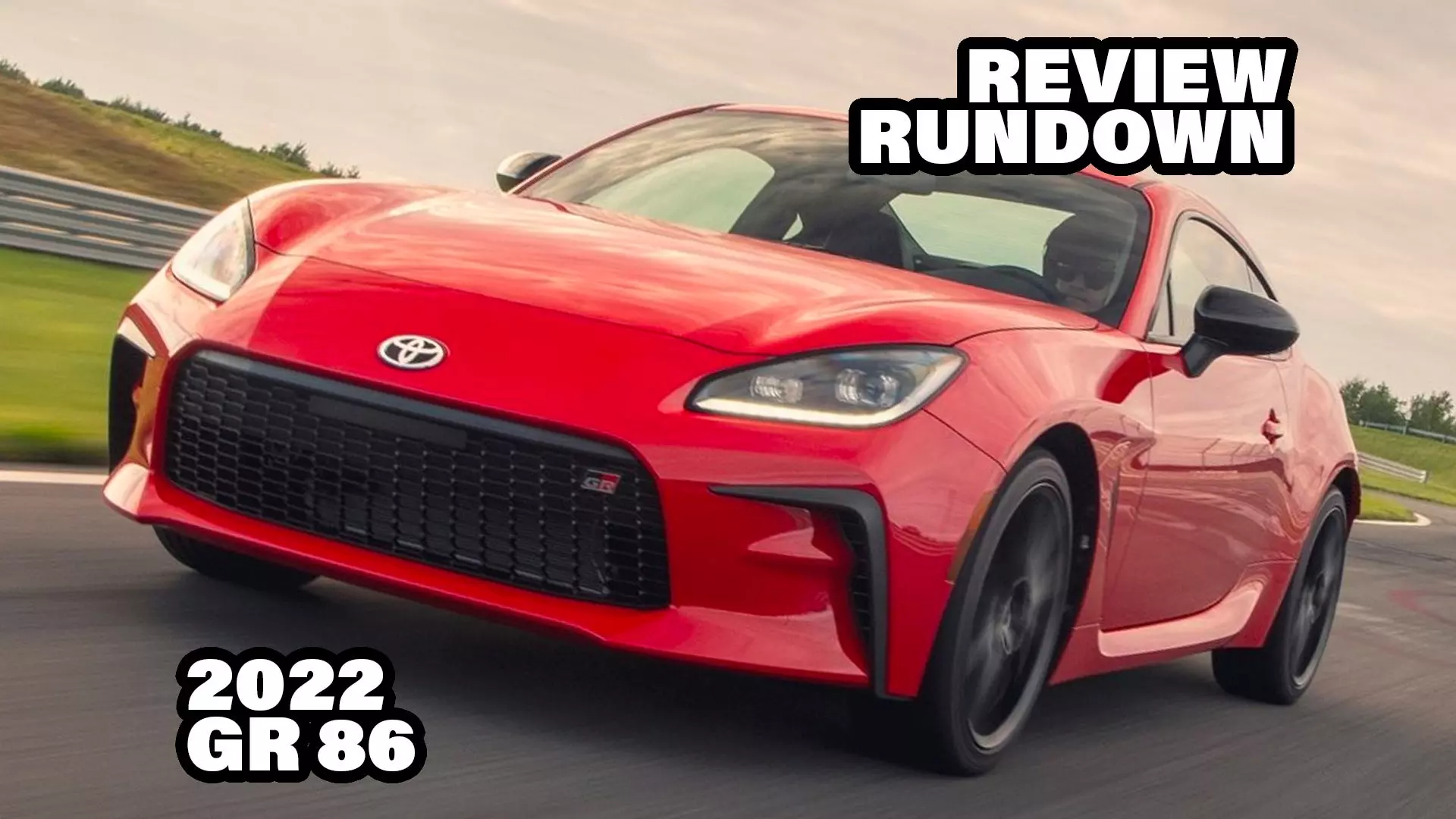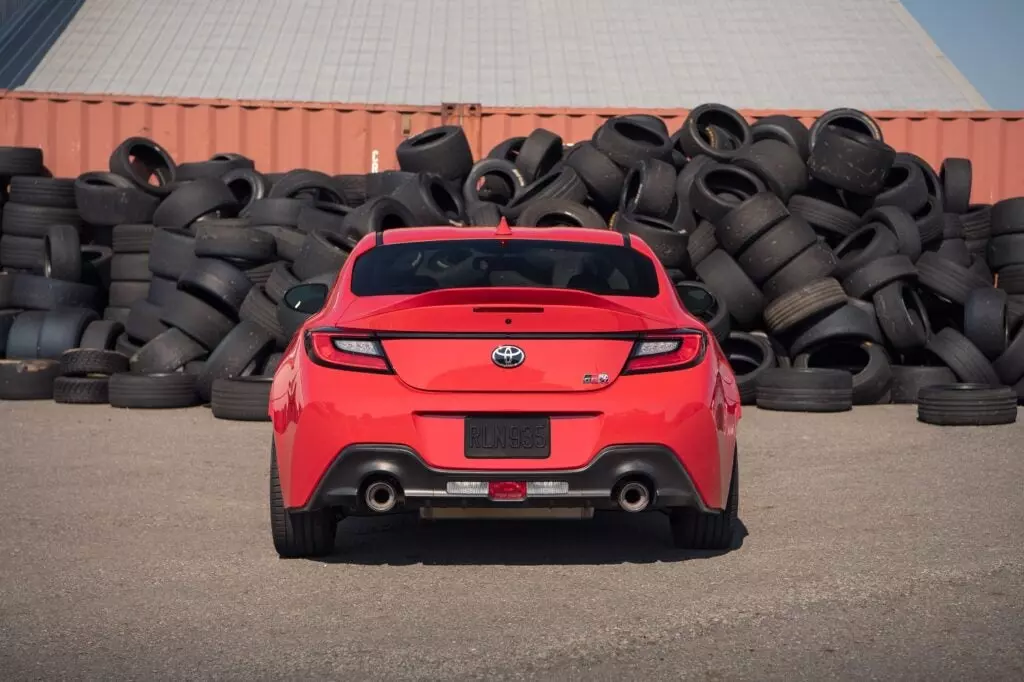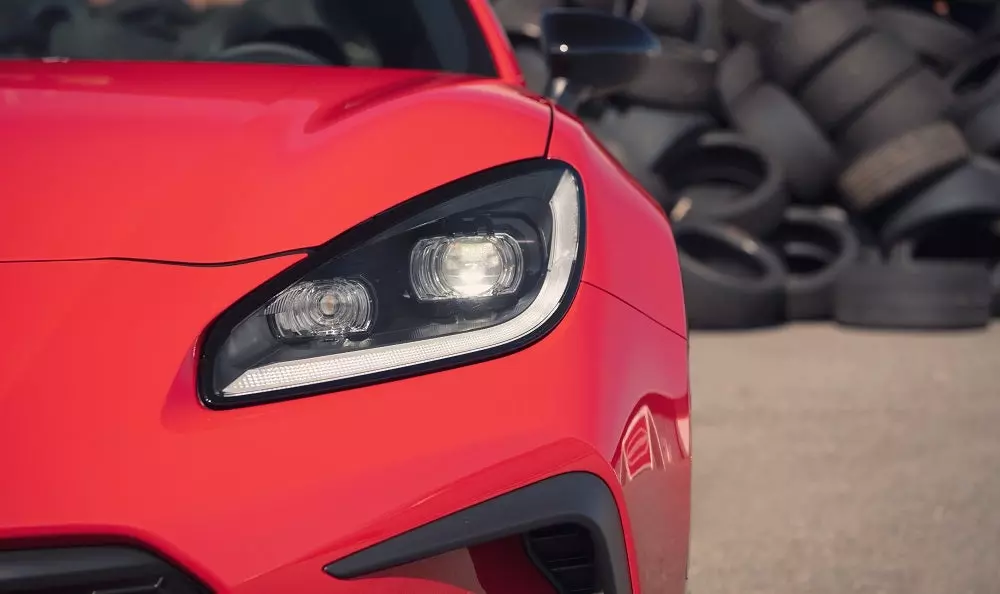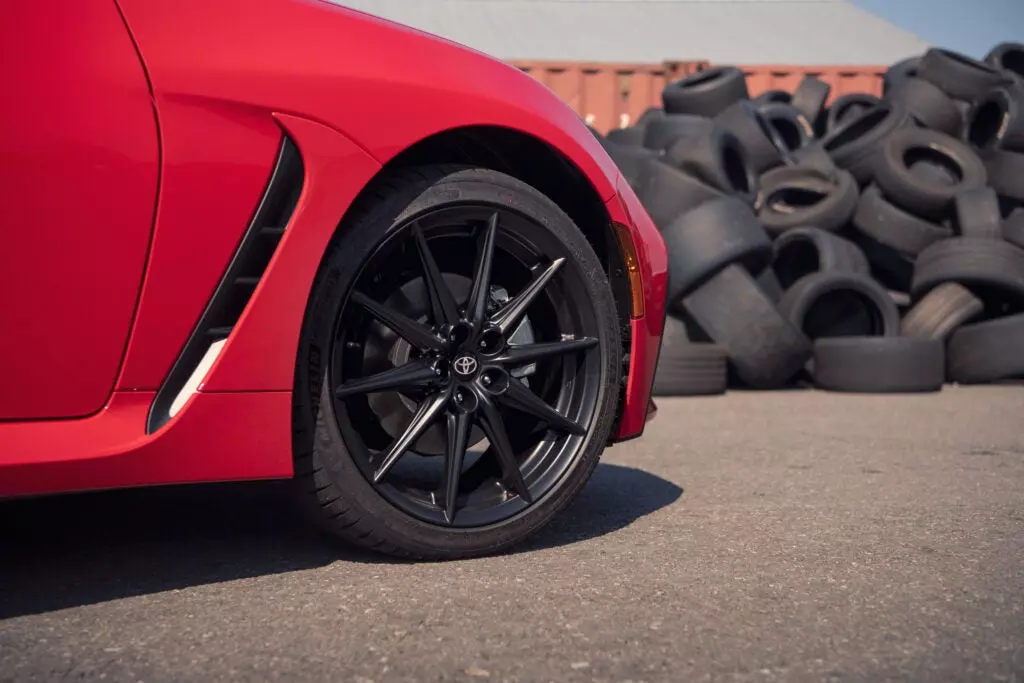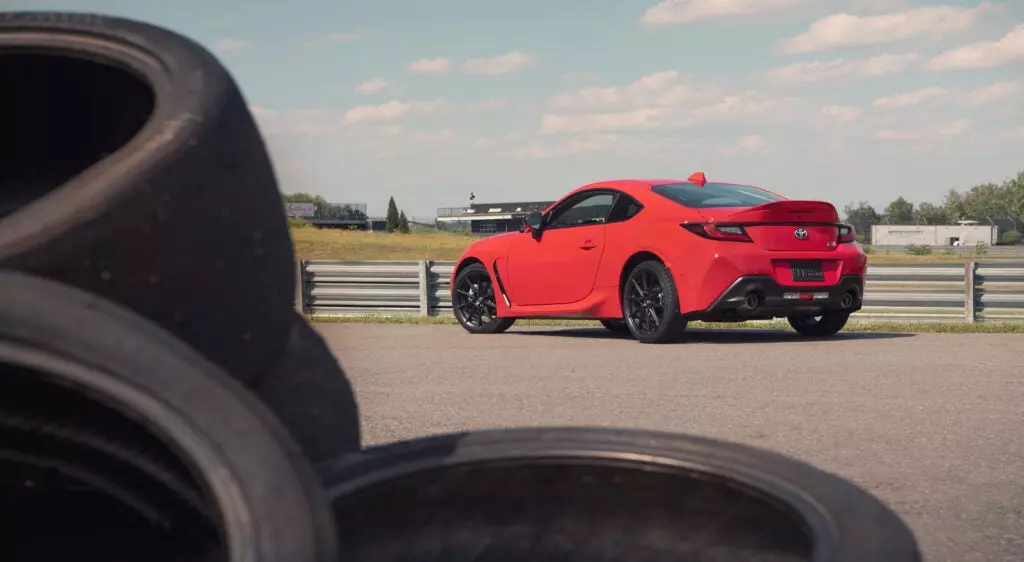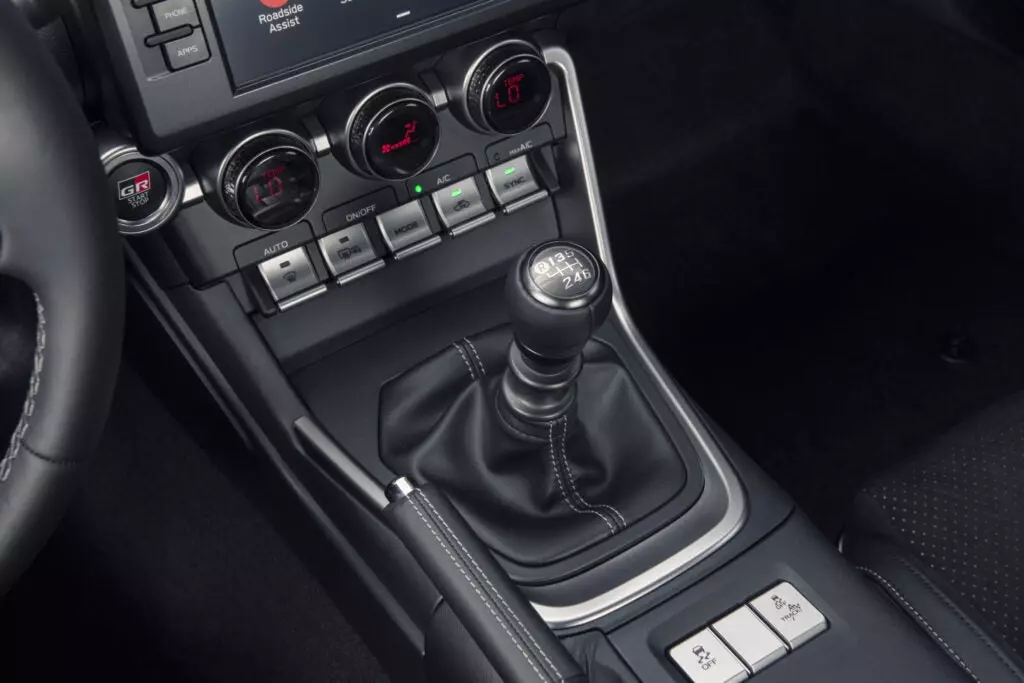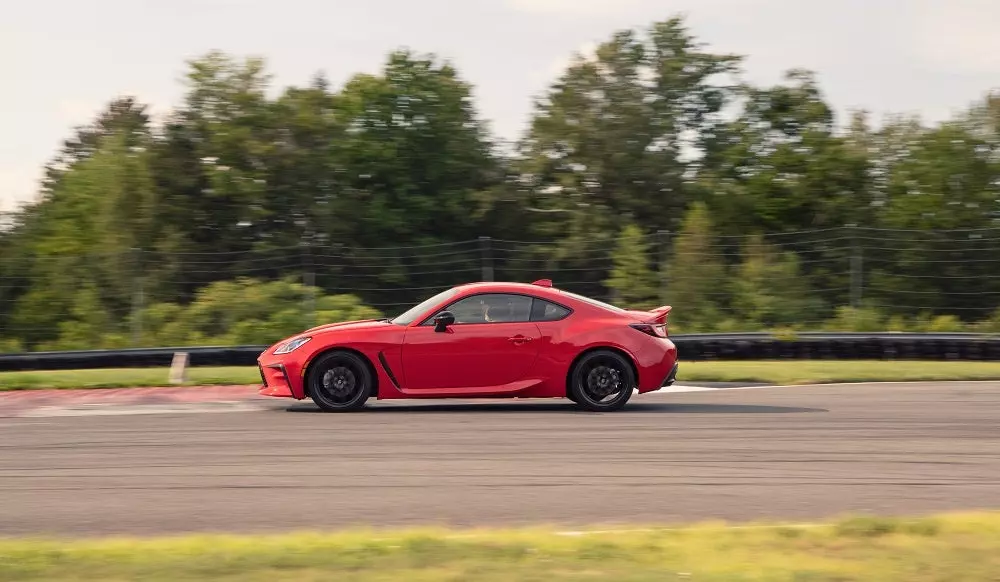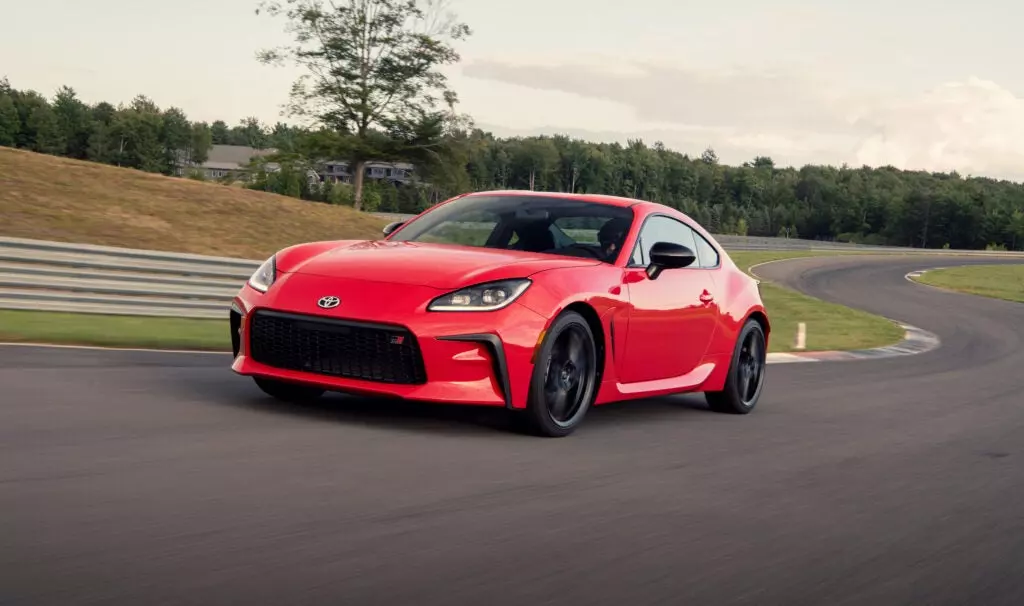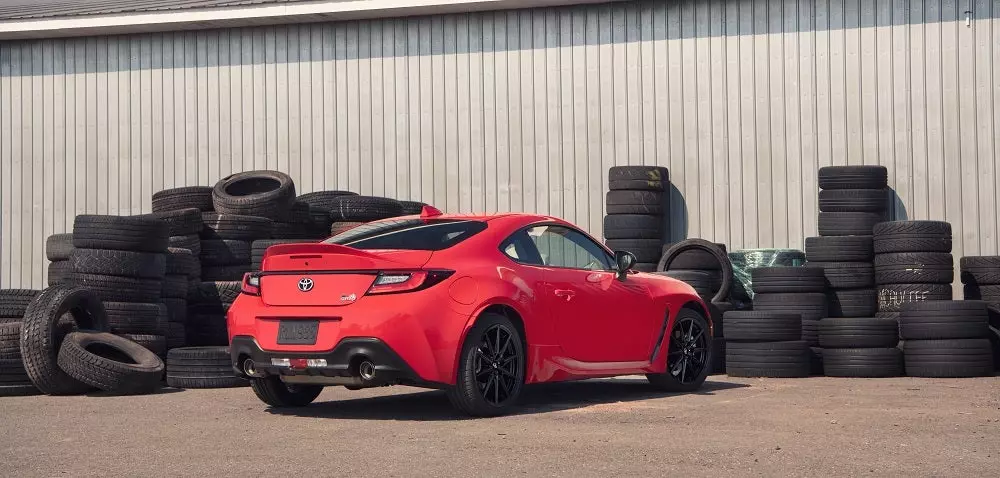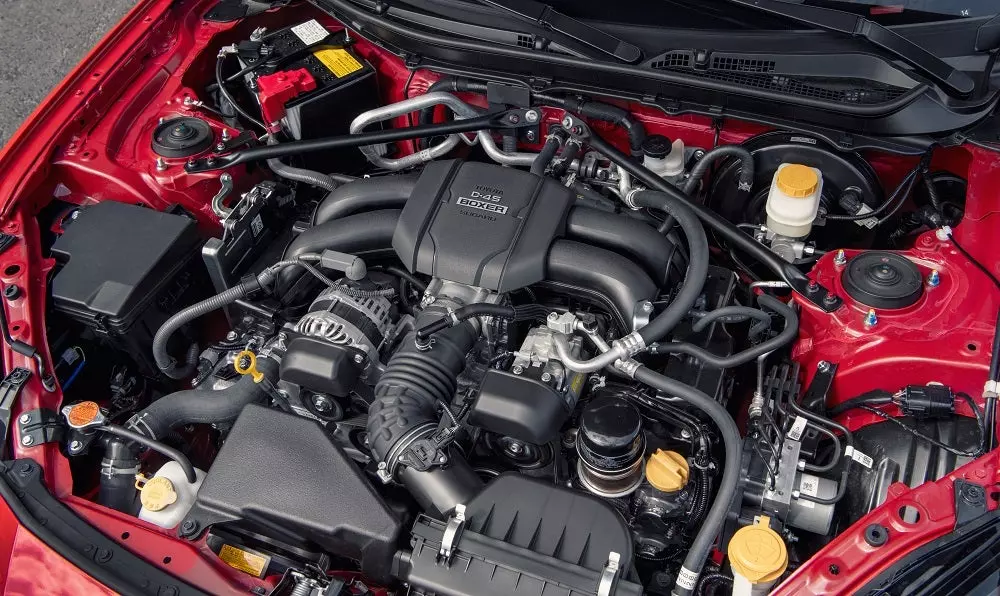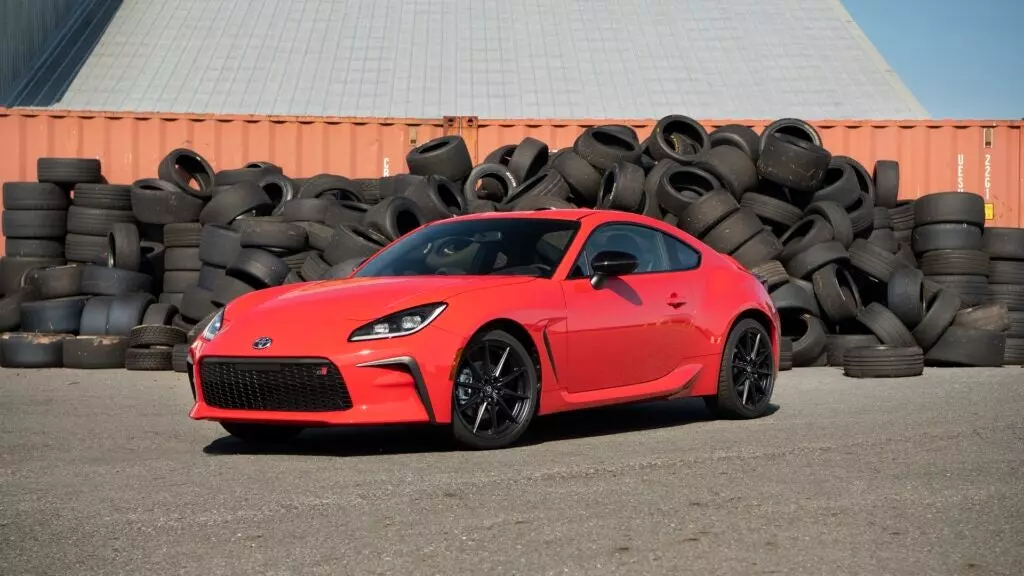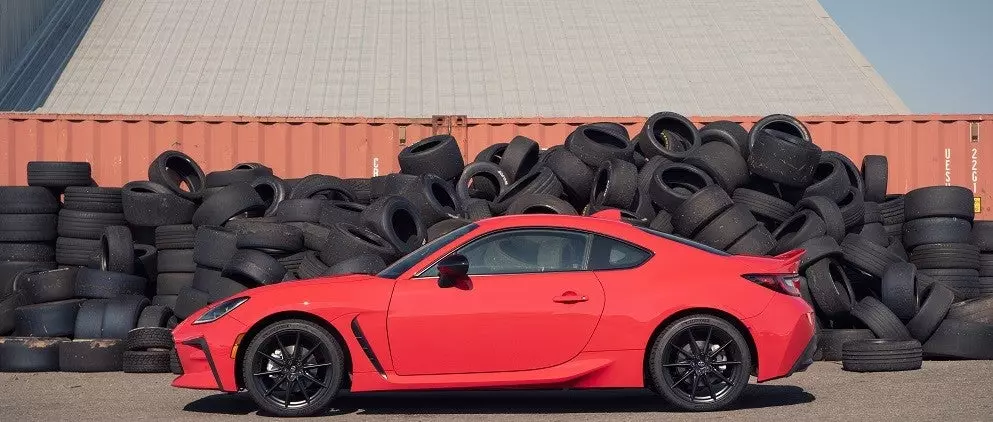This latest-generation Toyota 86, now dubbed the GR 86, has some massive shoes to fill. It has to be sharper, more refined, faster, handle at least as well as, and be better appointed than the old generation (which was excellent) without costing a fortune. It especially needed a little more power — the lack thereof was a big complaint by anyone who drove the old one. While the new model didn’t get the turbo some fans were clamoring for, it did get a lot of great upgrades. And now that the first wave of car journalists has driven it, the consensus seems overwhelmingly positive.
We’re here to report: The car ticks all the above boxes quite well, even without forced induction (thankfully… who wants to deal with all that extra heat?). After my own experience with the GR 86 on track and on the street, as well as reading up on what a bunch of other fellow journalists thought of it, we thought it’d be a good opportunity to put together another one of our world-famous Review Rundowns compiling first impressions from around the internet. And this time we get to weigh with some of our own insight, too (insert several sunglass emojis here).
Here’s what the automotive media is saying about the 2022 Toyota GR 86.
On Its Engine, and the Power That It Puts Down
Jeff Perez for Motor1: “By swapping the previous car’s lethargic 2.0-liter engine for a larger 2.4-liter unit (sorry, still no turbo), the GR 86 improves by 23 horsepower and 28 pound-feet over its predecessor. Total horsepower now sits at 228 and max torque is a modest 184 lb-ft. But it’s the application, not the numbers alone, that makes all the difference.
Torque peaks at a generous 3,700 rpm – a huge improvement over last year’s car, which didn’t hit until 6,400 rpm. Toyota even bests the torquey Mazda Miata and its 4,000 rpm peak. If you’re comparing it to turbocharged upmarket alternatives like the Porsche Cayman (1,950 rpm) and the four-cylinder Toyota Supra (1,550 rpm), sure, there’s room for improvement. But the GR 86 remains in a class of its own in certain respects.”
David Beard for Car and Driver: “The intake and exhaust plumbing has been smoothed out to improve airflow, and a plastic intake manifold replaces the former aluminum plenum equipped on manuals and features larger ports that feed a revised valvetrain.
From behind the wheel, the changes are obvious. The added 23 horsepower may not sound like much, but an 11 percent gain is a meaningful improvement in a 2800-pound car. We expect the manual-equipped GR 86 to shave time off the last 86 GT’s 6.2-second run to 60. The extra power should be good for a 5.8-seconds run to 60 mph, and the engine is livelier, more responsive, and happier as it spins to the 7500-rpm redline. It sounds better too. There’s a speaker to amplify the engine sound, and that sound intensity varies depending on the selected drive mode, but it’s good enough to believe it’s the real thing.”
Patrick George for The Drive: “Straight-line speed has never been the 86’s strong suit, but in adding almost half a liter of displacement, the new GR 86 does zero to 60 mph in 6.1 seconds in manual form. That’s close to a full second quicker than before, and you had better believe it makes a difference on a back straight. It now charges ahead with an urgency I never felt in the old car. It may not keep turbocharged sports cars awake at night, but it can take care of business. The power bump here is noticeable and welcome, as is the flatter torque curve, which makes a massive difference in thrust.”
Me for Car Autance: “Whether on track or on the street, the power adjustments are immediately noticeable, and it makes carving through fun successions of corners a more pleasant experience. It can still be wrung out to a hearty 7,500 rpm, but corner exit is far more enjoyable with the added oomph. Drivers no longer need to downshift and rev the hell out of it to achieve the push they desire.”
On How the New 86 Handles and Steers
Jason Cammisa does a very thorough review of the new 86, focusing a lot on its handling, on his show Icons on the Hagerty YouTube channel:
Aaron Gold for Motor Trend: “We’d also like to see a bit more feedback from the steering. The ratio, effort, and weight of the steering are just about perfect, allowing for sharp, precise turn-in and easy adjustment of our line. But the feedback feels muted, as if we were wearing gauze gloves, and understeer was something we sensed more with our ears and butts than our hands.
One of our complaints about the old Toyota 86 was its ride quality. On our brief drive on the relatively smooth public roads surrounding the Monticello Motor Club, the new GR 86 did seem more compliant and comfortable, with no loss in handling agility. We’ll have to wait for our First Test on our home turf in Los Angeles, but we’re optimistic that the GR 86’s ride/handling trade-off will be no trade-off at all.”
Jon Wong for CNET Roadshow: “Out on the track at Monticello, the GR 86 Premium is a riot to toss around, and much more buttoned up than the 86 it replaces. Steering response is snappier, quickly tucking the front end into corners, while body roll is minimal and the Pilot Sport 4s keep things nicely stuck, allowing you to roll into the throttle earlier on corner exit. The GR 86 handles high-speed side-to-side transitions with aplomb and feels surefooted when driven hard. Getting the rear to step out is easily done with the throttle and it’s a cinch to control with some countersteering.
Saddling up in the base car with the skinny Primacy HP tires is more of a slip-and-slide experience. There’s more tire sidewall squirm at turn-in, and it has lower cornering capabilities and not as much overall grip, requiring a more gradual throttle application out of bends. The base car is definitely more of a handful to drive hard, but hugely entertaining in its own right thanks to the 86’s balanced chassis.”
Jeff Perez for Motor1: “For as fun a thing as it is to fling around a track, the GR 86 is cooperative on the road too. The steering is lighter and the suspension is a touch softer than they both were previously – this coupe doesn’t crash down on broken pavement as aggressively as its predecessor did. With the base 17-inch wheels, the ride is actually acceptable as opposed to back-breaking. The 18-inch wheels and low-profile tires, obviously, are less comfy.
But comfort still comes second to driver feel, and this car’s connectedness to the pavement is unparalleled even on public roads. Quick, tactile steering and telepathic body movements make the GR 86 supremely fun to pedal up and down the backroads of upstate New York. The Premium trim, yet again, proves it’s the one to get with better grip, improved style, and more safety than what’s offered on the standard 86.”
Me for Car Autance: “All of these changes and updates added up to a solid and connected, yet well-damped, driving experience. It was comfortable and compliant on the street, yet body roll was contained on track. Paired with the Premium trim’s 215/40/18 Michelin Pilot Sport 4 tires, it felt very confident under braking, allowing for easy trail and threshold braking. I recall a friend of mine who owned a Scion FR-S and a Toyota 86 TRD Special Edition telling me that the cars’ chassis rigidity was quite good from the factory, which made them excellent out-of-the-box track toys, and that characteristic carries over to the new generation. New and old buyers alike should be excited to know the GR 86 retains its penchant for track driving with even better handling.”
On the Inside, and Overall Refinement
Aaron Gold for Motor Trend: “Inside, the Toyota GR 86 presents a modernized take on the previous interior layout. Switchgear placement is mostly the same, but the switches themselves look better and up to date. The instrument panel has been replaced by an LCD panel that displays a round tachometer circling a digital speedometer until you select Track mode, which swaps in a horizontal ribbon-style rev counter that is easier to read at a glance.”
Adam Ismail for Jalopnik: “But I do want to take a moment to talk about the interior, because aside from moaning about the lack of a turbo, interior quality is the main complaint I’ve seen lobbed at the Toyobaru kids over the years. I suspect my threshold for tacky plastics and the tactile feedback of switchgear is lower than most, because my only car is a Fiesta ST. I’ll admit that I didn’t have a wealth of time to focus on these things while there was an open track in front of me. That said, absolutely nothing about the interior jumped out at me as excessively cheap, flimsy, or indicative of the car’s stature as the entry point of Toyota’s performance family. I’d be perfectly happy spending every day in this interior.
Of course, the requisite enhancements to the infotainment system and instrument panel make the GR 86 feel more modern. The 8-inch touchscreen is noticeably larger than whatever Nintendo Switch-sized panel was affixed to the dash of the outgoing car, and I genuinely like the new digital speedometer and tach. (Which is saying something, because I feel digital instrument cluster design is almost universally terrible these days, but that’s a soapbox for another time.) Also, I’ll applaud Toyota and Subaru for strangely keeping the auxiliary audio port around, even though the company that makes your phone ditched it five years ago.”
Patrick George for The Drive: “Most of the old 86’s roughest edges have been sanded down but not off, thankfully. Too many sports cars fall into the trap of “refinement” with subsequent generations. Not here, though. The GR 86 is a bit less irritating to live with day-to-day now, but it keeps its character intact. For example, the clutch uptake remains high—I and a bunch of other auto writers had a bad habit of stalling out the old car—but it seems more livable here.
The manual shifter is still one of my favorites, although the one in the competing Miata is a little smoother and a little shorter overall. Whatever Subaru and Toyota have done to the suspension is appreciated because the ride quality is a big improvement that obviously doesn’t come at the expense of handling.
On the inside, the GR 86 feels like a bunch of Scion designers got pulled out of retirement for One Last Job. By that I mean it’s still very much a Subaru economy car interior, with the economy car plastics molded into aggressive-looking buttons and switches, as if meant to appeal to a teenage driver who describes everything they love as “fire.” But the car has to start under $30,000 somehow, and that’s gonna be how.
I didn’t get enough time to really test the infotainment system, but it looks about five years behind most modern cars, a far cry from those big-tablet systems you find on other Subarus. Then again, do you want something like that on your affordable sports car? The stereo isn’t anything to write home about either; but again, none of that is the point of the GR 86.”
Jon Wong for CNET Roadshow: “What still isn’t comfortable for most people are the 86’s back seats, which are lacking in the leg- and headroom departments. Kids will manage, but you probably don’t want to put adults back there unless you like watching them suffer. With the back seats folded down, Toyota says there’s still enough cargo room to carry an extra set of wheels, a jack and some tools for track day exploits.
The 86’s cabin layout is simple and easy to navigate, with large, clearly labeled switches. All GR 86 models get smartly placed soft touchpoints like leather on the steering wheel and shift knob, padded armrests and suede trim on the upper door panels. Premium models upgrade to Alcantara and leather seating, two-stage heated front buckets, aluminum pedals and contrasting black and silver trim.”
On the Outside
Jeff Perez for Motor1: “Beyond obvious underhood upgrades, the new GR 86 looks much cleaner from a visual standpoint. Downturned headlights with standard LED accents adorn the front end, black accents on each side of the bumper house functional vents, and the big-ish front grille – like many a Toyota product – makes the fascia look more aggressive than the one it replaces.
The back end of this car is beautiful. Sharp taillight fixtures with gloss black accents extend out from the trunk lid and over the rear fender, there’s a swooping ducktail spoiler (on the Premium model) that makes this car look like a pricey running shoe, and a gloss black diffuser surrounds dual exhaust tips.
The new GR 86 is technically larger than the one it replaces, but just barely. The overall length grows by about an inch, and the wheelbase stretches by just 0.2 inches, and there are some visible size distinctions when you put the two cars side by side. The front and rear overhangs of this new model extend out slightly further than on the previous version – but only keen eyes will be able to tell the difference.”
Patrick George for The Drive: “The good news is Toyota and Subaru didn’t screw this up. It feels like every new car model gets bigger, fatter, heavier, and less engaging with each iteration. Yet the GR 86 (now adding “Gazoo Racing” to its name; we’ll see if that catches on) and 2022 BRZ are just one inch longer overall, marginally longer in wheelbase, actually half an inch shorter than their outgoing versions, and have only gained about 80 pounds. They still come in well under 3,000 pounds.
In other words, Subaru and Toyota kept things light and tiny, such that any weight and size changes are almost insignificant. That alone is an impressive engineering achievement, and it does a lot to keep the cars’ spirits intact.
It doesn’t look drastically different, either, but it does look better. The front and rear (including taillights) have been totally revamped for a slightly more mature look, with the former giving off serious Porsche Cayman vibes. It has a sleeker shape overall, and from some angles almost looks like a baby Lexus RC F—which I didn’t mind. The front fenders and the roof panel are now made of aluminum to keep weight down, too. Finally, I’m glad to see the tasteful ducktail spoiler on the Premium trim replace the somewhat gaudy old rear wing. That was a little too 2000s for my taste.”
Aaron Gold for MotorTrend: “A lot has changed from old to new—this is, after all, a wheels-up redesign, for which Toyota once again partnered with Subaru, who is launching its own second-generation BRZ sports car. The engine is bigger but still not massive, while the torque curve is meatier but not so much that it overwhelms the tires (or the driver). The styling is neater and more contemporary inside and out, and the ride is better. The back seat is still useless, but the basic character of the car is intact—and that is the most important thing.
For our dive into the details, let’s start with the styling. The new GR 86 loses the gangly adolescent awkwardness of the old car, trading it for a tighter, smoother shape with styling cues that remind us a lot of the 1993-98 A80 Supra (and taillights that remind us of the previous-generation Honda Civic coupe). We think it’s a better-looking car than the outgoing 86—the new model’s additional GR letters stand for Gazoo Racing, Toyota’s in-house tuning outfit—and one that is completely different in the details yet pleasingly familiar in overall shape.”
Photos
The new GR 86 is a great-looking car, here’s a batch of photographs Toyota released for you to enjoy!
Verdict
The new GR 86 is simply a better version of a beloved, largely affordable, sports car. These are great cars for people who love driving but don’t have, or want to spend, Porsche money.
